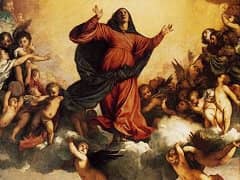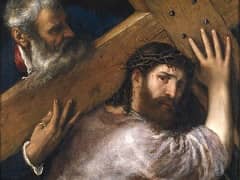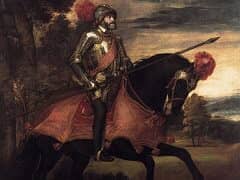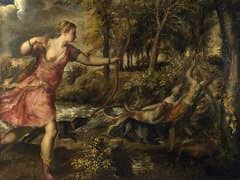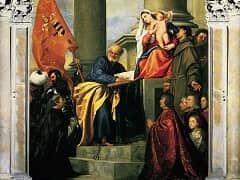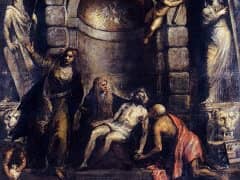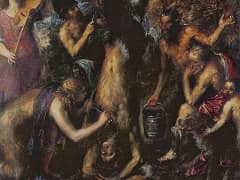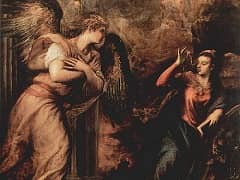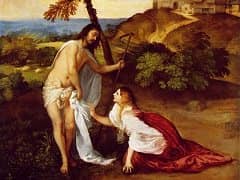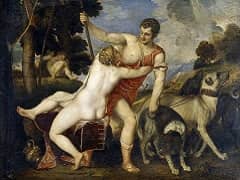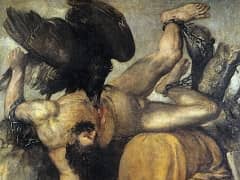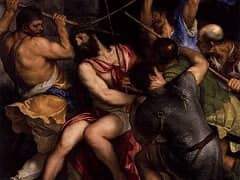The Entombment, 1559 by Titian
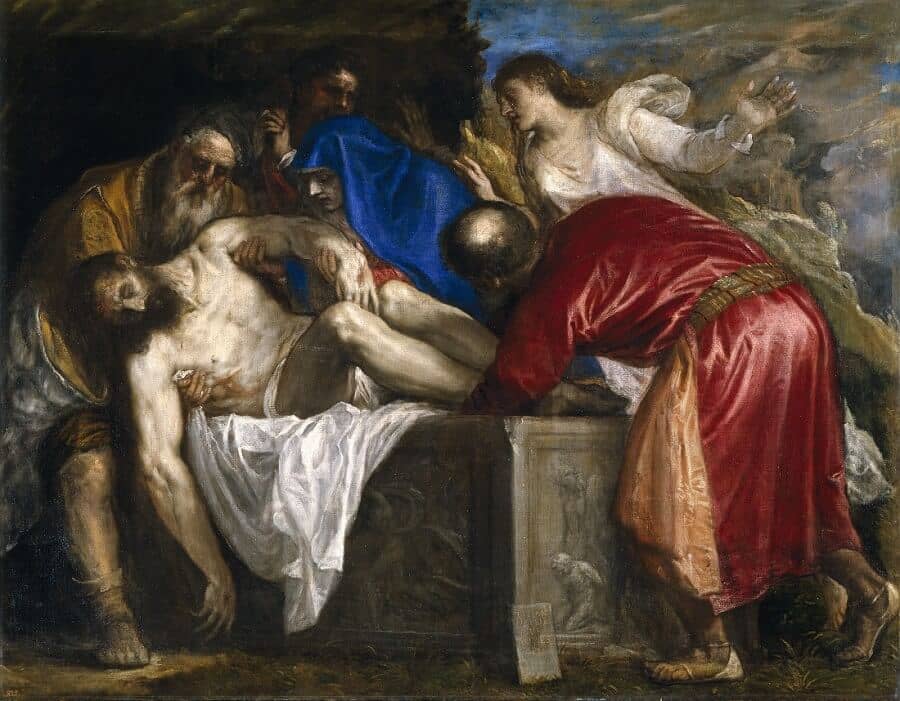
In July of 1558 Philip II ordered this painting to replace another of the same subject that had been lost in transit, and a letter from Titian dated September 27 of the following year announced shipment of the completed canvas. Serving as the basis for Titian's invention here was his own earlier composition of about 1525, but the controlled choreography of that version has yielded to a heightened urgency of expression. The figure-frame relationship now establishes a greater density of form, and this format tends to preclude a classical spatial structure. With a more dynamic counterpoint, the figures are compressed and the focus is concentrated on the body of Christ - now more fully illuminated but broken, as it were, by the very bending of the lower limbs.
And yet, despite the increased sense of agitation and the relative surrender of emotional composure, Titian has, if anything, designed a composition of even greater structural clarity and control. A pair of coordinates divides the field: the horizontal top of the sarcophagus is intersected by the vertical running along its near edge and continuing above in the separation between landscape backdrop and sky. Within the textural and chromatic unity of the whole, the resulting quarters of the composition are invested with own special values. The left half of the painting carries, literally, the greatest weight: the concentration of mourners around Christ and, above all, the terrible ponderation of his own figure. In contrast to these heavy verticals, the right half appears volatile, characterized by a horizontal linear direction: here it is the rushing figure of the Magdalen that establishes the essential thrust, along with the leaning body of Nicodemus. Realizing this pictorial structure, giving it unity and conviction, is, of course, Titian's brushwork. The organizational scheme is carried out in the smallest dimension as well, in the basic constitutive element of the brushstroke: on the left the paint has been applied directly and firmly, with substance; on the right the Magdalen's gossamer flight is achieved by longer, lighter strokes, and the graphic impasto functions against a very thinly painted ground.

